You might also want to
P9135B Product Used Image Gallery
The Most Trendy Exterior Villa Designs
Villa Exterior Design with Neoclassical Polyurethane Products Bring Elegance and Durability Together Neoclassical style architecture allows reinterpretation of classical lines with modern touches Polyurethane decorative elements used in villa exteriors attract attention with both their aesthetic appearance and durability Light, long-lasting and easy-to-apply polyurethane products add an elegant and eye-catching air to the exterior of your villa Neoclassical polyurethane exterior decorations include details such as columns, arches, cornices, plasterboards and window frames These decorative elements add magnificence to the structure while also being highly resistant to water, moisture and external weather conditions Compared to traditional materials such as wood or plaster, they do not require maintenance and maintain their first-day elegance for many years Polyurethane products used in neoclassical exterior design offer personalized solutions to villa owners Thanks to different pattern size and color options, it is possible to add aesthetic touches suitable for every structure In addition, thanks to their lightweight structure, they are easy to install and do not increase the static load of the structure If you want to add a timeless elegance and sophisticated look to the exterior of your villa, neoclassical polyurethane decorative products will be a perfect choice This design approach that brings together both traditional and modern elements gives your villa a unique identity
Aesthetics and Elegance with Polyurethane Column Capital Jamb and Eaves Molding in Neoclassical Villa Design
Neoclassical villa designs offer a timeless aesthetic by combining the elegance of classical architecture with modern structures Polyurethane columns used in this style stand out with their detailed processing column headings jamb models that complete window and door frames and eave moldings that add elegance to the roof line are important elements that strengthen the architectural identity of the structure Polyurethane materials provide both aesthetic and functional advantages on the exterior of the villa thanks to their light structure and high durability Columns and headings used especially in the terraces and balconies of neoclassical villas create a showy and prestigious appearance These decorative elements provide visual depth to the structure provide architectural integrity and complete the exterior with an artistic touch
Neoclassical Villa Design with Polyurethane Columns and Elegant Cornice Details
Neoclassical Inspiration with Polyurethane EleganceThe villa exterior showcases the essence of neoclassical design through symmetry, proportion, and the refined use of decorative elements. The combination of a dark wall finish and crisp white polyurethane accents creates a striking contrast that emphasizes the harmony of the façade. Each column and cornice brings rhythm and visual balance to the entrance, while the fountain strengthens the overall geometric composition.Polyurethane provides designers with flexibility and durability, allowing intricate ornaments. The central balcony framed by columns and balustrades serves as the highlight of the upper floor, creating a ceremonial presence. The entrances feature arch-shaped reliefs and richly profiled cornices, evoking a sense of grandeur.Historical ContextThe use of classical orders such as Doric, Ionic, and Corinthian has inspired architects since antiquity. This villa integrates such references into a contemporary form, with straight fluted pillars resembling Ionic columns and delicately carved window surrounds recalling Renaissance flourishes.Details and Decorative MotifsThe window pediments are styled with triangular and arched forms, adding variety while remaining symmetrical. The ornamental urns placed in the garden reflect the villa’s attention to landscape design, while the elegant balustrades highlight the transitional space between indoor and outdoor.The façade rhythm is further enhanced with a layered roofline and decorative friezes, reflecting timeless architectural discipline. The central fountain, with circular basins and mythological motifs, acts as an axis, reinforcing a sense of refined balance.Symmetrical façade with polyurethane ornamentationElegant columns framing the main entranceDetailed cornices and friezes for visual richnessBalustraded balcony for structural balanceFront garden with fountain and decorative urns This villa design exemplifies neoclassical harmony with its symmetrical composition. Polyurethane elements enable finely detailed cornices and columns. The façade features a balanced contrast of dark walls and white trim. A circular fountain establishes a visual center in the garden. The arched doorways enhance the classical atmosphere. Decorative pediments add variety to the window design. Proportions reflect architectural discipline. Elegant balustrades emphasize the balcony’s ceremonial quality. Columns recall the influence of Ionic traditions. The structured layout reinforces timeless elegance. Ornamental urns highlight landscape integration. Sophisticated friezes strengthen the rhythmic façade. Polyurethane offers durability with artistic flexibility. The detailed doorway evokes historic grandeur. Overall, the villa blends modern construction with classical integrity.
Rustic Villa Facade with Polyurethane Details and Elegant Natural Design
Rustic Facade with Polyurethane EleganceThe villa is designed with a strikingly balanced geometric arrangement, where three sharply pitched gables dominate the facade. The triangular configuration emphasizes symmetry and creates a strong visual rhythm, which complements the warm, earthy materials used across the exterior. The exposed wooden trusses under the gable roofs highlight the architectural skeleton, conveying an authentic rustic essence while allowing interplay of light and shadow.Polyurethane decorative elements have been applied with precision, framing the upper balconies and window details. These components mimic the look of carved wood but provide greater resilience against weather, making them ideal for long-term outdoor use. The combination of natural stone cladding and polyurethane accents results in a fusion of tradition and innovation.Large glass windows maximize daylight, connecting the lush surrounding gardens with the interior, and the wrought-iron railings with floral ornamentation add character and charm. The landscaping follows the architectural lines of the villa, using circular motifs of bushes and curved hedges to create continuity between garden and building design.Historical Context in Rustic DesignsThe triangular gable form has roots in medieval European architecture, often used in rural dwellings for efficient rain and snow runoff. Today, this design reinforces both practicality and strong aesthetic appeal in rustic-styled villas. By integrating historical references with modern polyurethane finishes, the villa offers a timeless yet innovative interpretation of classic rustic architecture.Polyurethane details ensure durability and fine decorative precision.Rustic stone and wood textures blend with natural surroundings.Geometric gable repetition strengthens the architectural rhythm.Facade balance is achieved through symmetry and proportion.Landscape integration enhances cohesion between garden and structure. This rustic villa combines natural textures with refined polyurethane details to create harmony. The triple gabled roof structure showcases a strong sense of geometry. Exposed trusses contribute to an authentic rustic character. Polyurethane ornaments frame balconies and windows elegantly. Large glass panels bring natural light indoors effectively. A balanced garden layout enhances the integration with architecture. Circular hedges soften the structured lines gracefully. Earth-toned stone cladding strengthens the rustic impression overall. Wrought-iron railings with flowers add decorative charm. The triangular gable echoes historical European design traditions. This design merges heritage with functional innovation. Modern polyurethane applications ensure long-term durability. Geometric repetition forms a rhythmic architectural language. The facade becomes both stylish and natural. This villa demonstrates how thoughtful detailing creates timeless elegance.
Neoclassical Villa Facade with Polyurethane Decorative Elements
Polyurethane in Neoclassical Villa Facade DesignThe use of polyurethane in exterior decoration allows architects to create highly detailed neoclassical elements that are both elegant and durable. In this villa, white polyurethane moldings form a bold contrast against the dark cladding, highlighting symmetry and ornamental detail. The arched frames above the windows carry floral motifs, enhancing the villa’s visual richness.Neoclassical architecture has a long history that traces back to the 18th century, reviving the principles of Greco-Roman design. Elements such as fluted columns, cornices, and carefully sculpted capitals are reinterpreted here in modern building materials. The balcony balustrade, with its carved spindles, adds an authentic layer of historical reference.The geometric precision of the panels is meticulously composed, with vertical pilasters reinforcing the structural rhythm. The facade features layered cornices that project outward, casting dramatic shadows across the surface. This balance of form and shadow gives depth to the villa’s two-story profile.Ornamentation is enriched through architectural details like decorative keystones, relief patterns, and recessed door frames. Each motif is carefully crafted, providing both textural complexity and visual harmony. The placement of lantern-style wall lamps furthers the classical mood while adding modern functionality.By using decorative motifs in resilient polyurethane, this design merges past and present. The result is a luxurious villa that embodies classical beauty while meeting contemporary standards of durability and material efficiency. This villa demonstrates how polyurethane elements enhance durability and style. The balanced geometry highlights a neoclassical silhouette with timeless appeal. Columns and cornices add rhythm and order to the exterior. The deep blue surface contrasts with brilliant white detailing. Window frames feature ornate decorative motifs resembling floral patterns. A balcony balustrade showcases classical heritage with graceful repetition. Historical references to Ionic and Corinthian forms elevate the design. The facade gains depth from layered cornices and shadow play. Ornamentation enriches the rhythm of the two-story composition. Light fixtures strengthen the villa’s stylistic character. Vertical pilasters emphasize classical proportion and structure. Polyurethane ensures resistance to weather damage. The exterior decoration merges past traditions with modern practicality. This villa example captures sophisticated grandeur. The result is a composition of harmony, resilience, and luxurious balance.
Neo-Classical Villa Exterior with Polyurethane Architectural Details
Neo-Classical Elegance in Modern Villa DesignThis villa exterior embodies a balance between traditional aesthetics and practicality through the use of polyurethane decorative elements. The facade combines deep blue wall textures with crisp white details reminiscent of neo-classical architecture, emphasizing strength, symmetry, and ornamental beauty.At the entrance, fluted columns with delicate Corinthian-inspired capitals support a projecting balcony adorned with balustrades. The windows are framed with precise arch moldings highlighted by keystones, showcasing the careful application of polyurethane details that replicate weighty stone without its fragility.The geometric organization of the garden enhances the villa’s aura of refinement. Circular stepping-stone motifs lead toward a central fountain, accompanied by neatly arranged border flowers and planters. The symmetrical paths carved into the landscaping echo Renaissance ideals of order and clarity while remaining practical for everyday use.The balcony and decorative pilasters add vertical emphasis, creating a rhythmic play of light across the facade. A short historical note: columns modeled after ancient Greek Doric, Ionic, and Corinthian orders became popular in the Renaissance and Baroque eras, later inspiring the modern classical revivals seen in designs such as this.Polyurethane allows these intricate motifs—arched surrounds, keystone reliefs, and sculpted capitals—to be both durable and lightweight. This ensures resistance to weathering while maintaining the sophistication of traditional detail. The sharp contrast between the dark cladding and the pure white ornamentation intensifies the architectural layering, giving the structure a noble profile befitting its stylistic heritage.Landscape and Exterior HarmonyThe exterior landscaping further complements the villa’s grand presence. Besides the central fountain, garden urns with floral arrangements frame the entrance, enhancing the sense of symmetry. A surrounding pool and paved leisure area extend the villa’s luxury to its outdoor setting, creating a holistic composition where built form and natural elements coexist. This villa design showcases a balanced synthesis of polyurethane craftsmanship and timeless neo-classical principles. Its deep blue facade creates a striking contrast with elegant white columns. Arched windows are enriched by keystone details that highlight symmetry. The grand entrance is accentuated with Corinthian-inspired capitals. A central balcony offers structural rhythm and refined balustrades. The landscaping includes geometric stepping stones that guide the eye to the fountain. Circular motifs emphasize harmony and order in the outdoor setting. Planters and urns add touches of ornamental greenery. A surrounding pool enhances the villa’s luxurious impression. The use of polyurethane ensures durability against weathering. Historically, the classical column orders inspired such refined motifs. Modern techniques allow lighter yet detailed forms. This villa balances grandeur with functionality. Architectural details emphasize both resilience and elegance. Overall, it is a vivid statement of modernized classical artistry.
The Most Trendy Exterior Villa Designs
Villa Exterior Design with Neoclassical Polyurethane Products Bring Elegance and Durability Together Neoclassical style architecture allows reinterpretation of classical lines with modern touches Polyurethane decorative elements used in villa exteriors attract attention with both their aesthetic appearance and durability Light long-lasting and easy-to-apply polyurethane products add an elegant and eye-catching air to the exterior of your villa Neoclassical polyurethane exterior decorations include details such as columns arches cornices plasterboards and window frames These decorative elements add magnificence to the structure while also being highly resistant to water moisture and external weather conditions Compared to traditional materials such as wood or plaster they do not require maintenance and maintain their first-day elegance for many years Polyurethane products used in neoclassical exterior design offer personalized solutions to villa owners Thanks to different pattern size and color options it is possible to add aesthetic touches suitable for every structure In addition thanks to their lightweight structure they are easy to install and do not increase the static load of the structure If you want to add a timeless elegance and sophisticated look to the exterior of your villa neoclassical polyurethane decorative products will be a perfect choice This design approach that brings together both traditional and modern elements gives your villa a unique identity
Polyurethane Neoclassical Villa Design with Refined Elegance
Neoclassical Elegance with Polyurethane DetailsThe villa exterior embodies a refined interpretation of neoclassical architecture, enhanced by modern polyurethane elements that allow for precise ornamentation. Its façade features tall pilasters that align with clean vertical grooves, emphasizing height and proportion, while columns with subtle fluting support the entryway with grace.Above the windows, arched pediments contain delicate relief motifs, adding depth and a sense of history. This decorative approach reflects inspirations from the classical orders of architecture—particularly the Ionic and Corinthian variations, known for their ornamented capitals and balanced compositions.Geometric Harmony and OrnamentationThe design integrates geometric rhythm in its balustrade railings, where evenly spaced balusters frame the balcony with symmetry. Below, the entry portals are accentuated by detailed polyurethane profiles that mimic traditional stone carvings but remain lightweight and durable. The lower façade is anchored by sturdy rectangular frames that bring visual grounding to the overall structure.A historical note can be observed: since the Renaissance revival, columns and pediments have been adopted in neoclassical residences to symbolize prestige and harmony. The same architectural language continues here, where polyurethane allows lasting fidelity to these motifs without the weight of stone.Refinement in DetailFrom floral embellishments framing the upper windows to linear grooves emphasizing façade divisions, each ornament contributes to a composition of elegance. The design achieves both functionality and refinement, proving how architectural motifs can create timeless curb appeal. Decorative wall sconces further highlight the reliefs at night, casting shadows that accentuate three-dimensional carvings. Overall, this villa offers a sophisticated balance between historic tradition and contemporary building techniques. This villa showcases a striking application of neoclassical architecture through precise polyurethane detailing. The façade balances symmetry with ornate decoration, making use of elegant columns and pilasters. Decorative pediments above the windows highlight classical motifs. The balcony balustrade provides a rhythmic geometric accent. Window frames are adorned with curved floral embellishments. Linear grooves across the façade emphasize order. Polyurethane allows lighter yet durable applications. The composition draws inspiration from ancient architectural orders. Balanced proportions elevate the structure’s harmony. Exterior reliefs add timeless detailing to the elevation. Soft lighting enhances intricate carvings at night. Historical influence merges with modern construction practicality. The villa reflects a graceful fusion of tradition and innovation. Every detail contributes to an exterior of refined beauty. It expresses sophistication through ornamental depth and architectural motifs.
Polyurethane Geometric Elements in Modern and Classic Villa Architecture
Architectural Harmony with Polyurethane ElementsThis villa showcases a masterful balance between modern lines and classical elegance. The use of polyurethane in wall trims, pilasters, and corner details highlights the decorative sophistication while maintaining durability and lightweight versatility. The geometric clarity of rectangular windows and the sharply angled rooflines create a strong contrast that captures the essence of contemporary design.The vertical alignments of the columns echo classical traditions, while their minimal embellishments reflect modern sensibilities. The integration of geometric patterns across the façade results in a rhythm of light and shadow that enhances the villa’s architectural expression. Each section of the façade is carefully proportioned to maintain visual harmony.Historical Reference in Modern LivingThe villa’s design pays homage to historical architectural motifs. Columnar divisions are reminiscent of classical orders, yet they are reinterpreted with streamlined modern forms. Historically, columns and pilasters were structural, but here they serve as decorative features made possible through advanced polyurethane materials.The contrasting use of dark and light tones enhances the dimensional depth of the design, making the decorative frames around the windows more pronounced. This creates a façade that is both monumental and inviting. By blending classic villa ornamentation with bold geometry, the building reflects both heritage and modern lifestyle.Geometric Elegance and Visual ImpactStrategic use of geometric design elements, such as rectangular paneling and triangular upper windows, builds an architectural identity that is sleek and authoritative. The arrangement of exterior lighting fixtures complements these shapes and emphasizes the villa’s sculptural quality during evening hours. The landscape with structured shrubs and color-balanced flowers further enhances the architectural framing of the villa.Ultimately, this composition demonstrates how decorative architecture can evolve through new materials and design approaches while upholding an eternal dialogue between tradition and innovation. This villa illustrates a refined fusion of modern aesthetics and classical charm. Polyurethane details are used to add lightness, precision, and durability in exterior decor. The vertical alignment of trims and pilasters carries a classical language in a minimal form. Geometric windows contrast with columnar divisions for balance and rhythm. The bold roof gable expresses sharp modernity. The strategic lighting enhances the decorative moldings, giving the house depth at night. Symmetry and proportion hold the façade together visually. The dark and light contrast creates an elegant visual hierarchy. The landscaping mirrors geometric design with structured hedges. Classical references are reinterpreted with polyurethane innovation. The timeless feel arises from columns reshaped in a modern scale. Decorative geometry ensures cohesion across dimensions. Strong vertical accents emphasize height and grandeur. This synthesis embodies modern living with heritage influence. Ultimately, the villa conveys harmony through architectural geometry and decorative expression.
Neoclassical Facade with Polyurethane Columns and Decorative Exterior Moldings
Neoclassical Exterior Design with Polyurethane DetailsThe showcased villa exterior demonstrates how polyurethane can be used to achieve timeless neoclassical aesthetics. Dominated by vertical symmetry, the residence integrates columns, arches, and window moldings in an elegant composition that blends modern durability with historical-inspired ornamentation.The entrance area is framed by fluted columns rising over a robust base, topped with decorative capitals. The central balcony on the upper floor, complete with a balustrade, carries a sense of grandeur reminiscent of classical architecture. Polyurethane pediments above the windows integrate angular and curved geometries, reinforcing the balance of order and ornament.The semi-circular doorway arch is supported by paired columns, an arrangement recalling the influence of antique Roman porticos. Decorative söve moldings above the windows emphasize rhythm and refinement, while the cornices layer horizontal depth across the facade. Historically, neoclassicism drew inspiration from Greco-Roman motifs, particularly visible here in the fluted column profiles and structured entablature.The landscaping complements the architecture with a circular fountain at the forecourt, surrounded by geometric flowerbeds and symmetrical planters. The interplay between stone textures, sculptural elements, and tiered floral arrangements provides an integrated harmony between built form and garden composition.Polyurethane fluted columns with ornate capitalsTriangular and curved pediments accentuating windowsDecorative cornices and symmetrical façade layoutElegant balustrades framing the central balconyHarmonized landscape design with central fountain This neoclassical villa facade displays refined proportions with polyurethane details. The design integrates columns that create both structure and elegance. Window pediments with triangular and curved motifs highlight sculptural accents. Balustrades add rhythmic depth to the upper balcony composition. The central entrance arch, paired with fluted supports, reflects classical harmony. Ornamental moldings frame the fenestration precisely. Decorative cornices emphasize horizontal alignment across the exterior. A landscaped garden enhances the facade relationship. A circular fountain becomes the focal point of the forecourt. Stone textures and structural geometry combine seamlessly. Symmetry remains the guiding principle throughout the villa design. Neoclassical inspiration echoes Greco-Roman elements gracefully. The balanced massing of columns and balconies recalls timeless architecture. Lightweight polyurethane ensures durability and aesthetic impact. This residence exemplifies the coexistence of tradition and modern material innovation.
Elegant Polyurethane Neoclassical Exterior Villa Decoration with Ornamental Columns
Neoclassical Elegance in Exterior Villa DesignThe façade of this villa is a prime example of neoclassical harmony, using polyurethane elements to enhance permanence and artistic detailing. Strong corner pilasters and symmetrical layouts define the entire composition, while the entrance is accented by tall columns crowned with Corinthian-style capitals.The balcony above the entrance is supported by robust columns, with finely crafted balustrades lined horizontally, ensuring a rhythm of light and shadow. Decorative relief motifs frame the windows, embedding floral details and flowing curves that contrast with the building’s sharp geometric lines. These encapsulate both structural integrity and surface ornamentation.The use of ornamental columns not only provides rhetorical grandeur but also reflects a historic design language inherited from Greek and Roman traditions. The layered entablatures and detailed capitals demonstrate an appreciation for classical antiquity, seamlessly modernized through polyurethane casting techniques.Detailed Craftsmanship with PolyurethaneA major benefit of polyurethane is its adaptability; it allows for lightweight but highly detailed reliefs that resist weathering and maintain sharp detailing throughout the years. From vertical moldings to ornamental keystone-like motifs above doors, every element ties into the villa’s symmetrical and proportional layout.The aesthetic is further enriched with decorative motifs that integrate geometric precision with organic patterns. The interplay of light across the white surface amplifies depth, bringing forward both structural shapes and delicate carvings. This fusion of classic villa design traditions with modern material efficiency is a timeless solution for luxury residences. This villa exterior presents a refined neoclassical identity that emphasizes verticality, proportion, and ornamentation. It makes use of polyurethane to achieve light yet durable decorative forms. The façade is structured with tall ornamental columns that frame the entrance symmetrically. Above the entryway, a balcony with rounded balustrades offers rhythm and balance. Each window frame carries decorative reliefs with fine motifs. The design highlights neoclassical balance by integrating corner pilasters and entablature elements. White tones dominate the surface to intensify shadow play on details. The façade is marked with flowing floral carvings and linear geometry. Aesthetic depth is enhanced by proportionally set windows and refined moldings. Classical history inspires the capital designs and layered cornices. The villa exterior merges tradition with modern material advantages. Polyurethane allows high precision while remaining resistant to natural wear. The architectural expression insists on harmony between geometric strength and artistic decoration. Both front and sides embody classic villa design principles. This residence model translates rich historical influences into contemporary permanence.
P9135B Polyurethane Panel Features
The P9135B Polyurethane Panel is crafted with precision, combining modern durability with classical elegance. Its smooth white surface and layered molding design create a refined border suited for both walls and ceilings.
An interesting detail is that panels with similar decorative motifs can be traced back to ancient Greece and Rome, where stone and plaster moldings defined architectural harmony. Today, polyurethane achieves the same sophisticated look with lighter construction and improved longevity.
- Decorative molding for walls and ceilings
- Durable, resistant to moisture and cracks
- Lightweight material, easy installation
- Adaptable to classic and modern interior styles
This panel delivers functional resilience while enhancing the overall aesthetic of a room. Its layered geometry and proportional balance allow it to complement diverse interiors effortlessly.
The P9135B Polyurethane Panel is designed to bring refinement to interiors through elegant proportions. It offers lightweight durability suitable for long-lasting installations. Many people choose it for its resistance to moisture and cracking. The clean molding lines add a sense of craft to walls and ceilings. Historically, decorative panels reflect design elements from ancient architecture. The P9135B model transforms these inspirations into a modern context. Its white finish enhances both classic and contemporary settings. Flexible use makes it compatible with different design themes. Simple installation is an advantage for professionals and homeowners alike. The panel’s surface detailing emphasizes geometric balance. It adds texture while maintaining subtle elegance. This makes it appropriate for minimalist and traditional rooms. Strong composition provides functional reliability over years. The P9135B Polyurethane Panel bridges heritage and innovation. It is an aesthetic solution for those seeking detail with simplicity.
P9135B Polyurethane Panel Coating Models and Design Options
The P9135B Polyurethane Panel is a refined decorative element designed for versatile interior applications. With its clean lines and elegant molding details, it brings a polished finish to walls and ceilings. Many homeowners appreciate panels like this for their lightweight yet durable structure, making installations simple and reliable. Polyurethane has historically replaced traditional plaster and wood moldings due to its resistance to moisture and cracking. A short anecdote worth recalling is that decorative panels similar to these were once carved in stone during ancient times, especially in Roman and Greek architecture, but modern polyurethane provides the same charm at a fraction of the effort. Whether used in contemporary or classical interiors, the P9135B Polyurethane Panel is adaptable to many decorative concepts and offers long-term aesthetic value.
p9135b panel, polyurethane panel, wall panel, decorative molding, interior decoration, lightweight panel, moisture resistant panel, architectural panel, decorative panel, ceiling molding, durable panel, modern panel design, classic panel style, wall coating panel, decorative trim
No reviews found!





















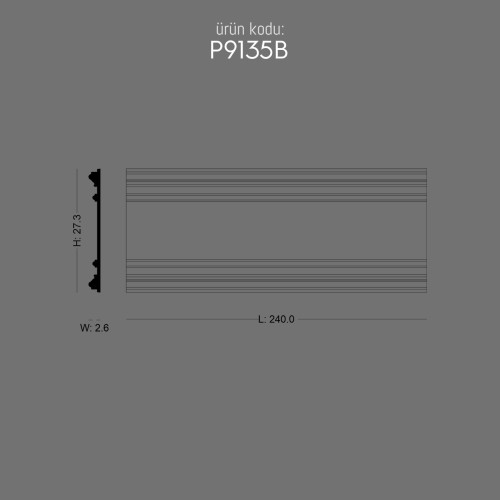













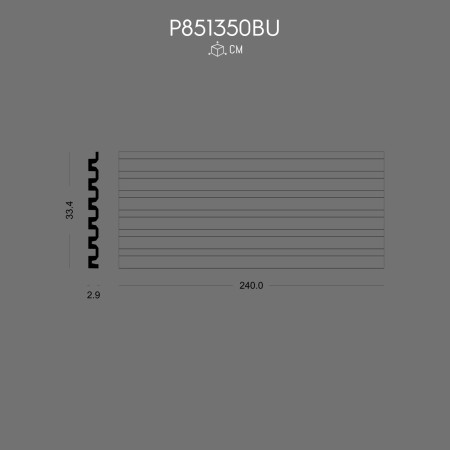




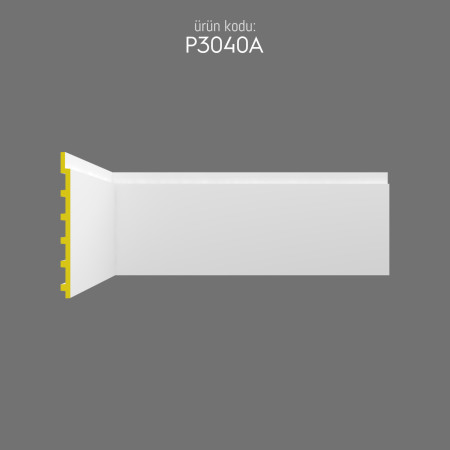
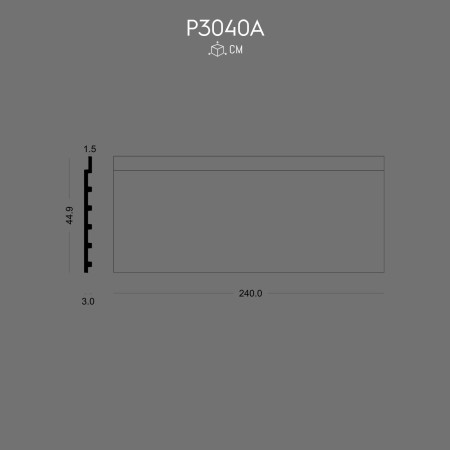














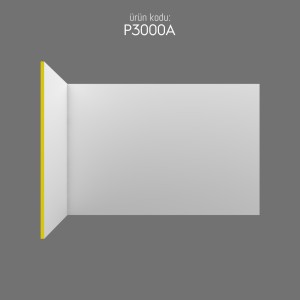




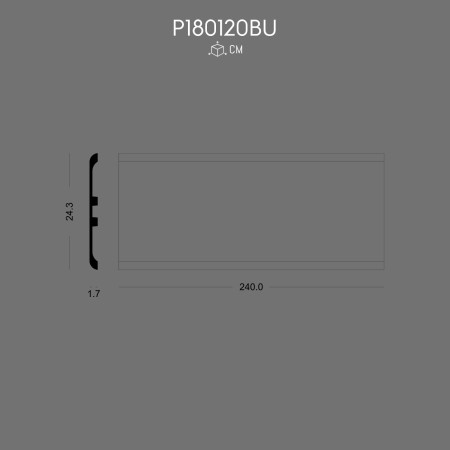


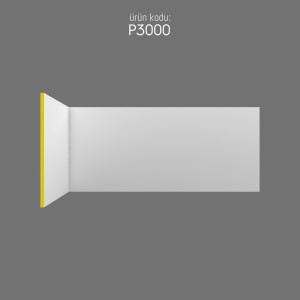
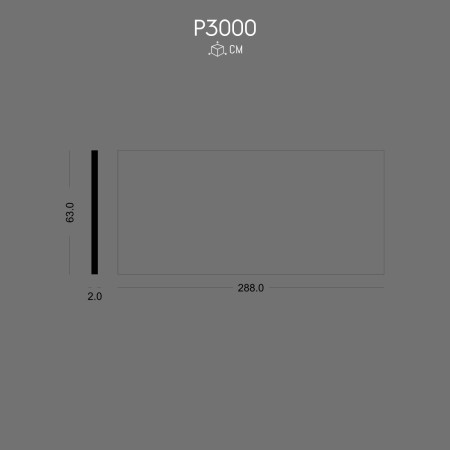


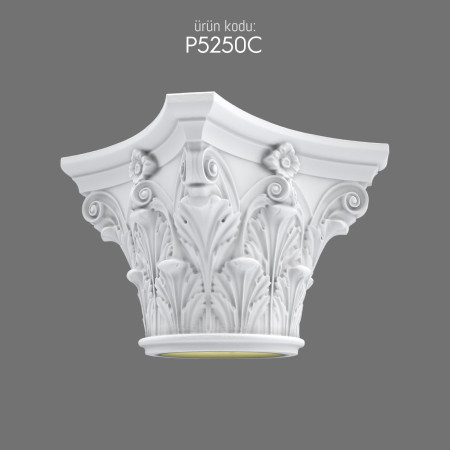
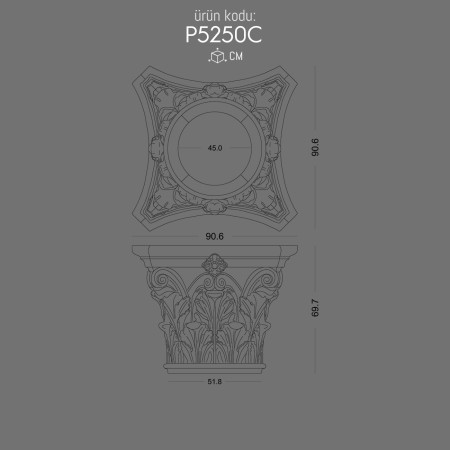







No reviews found for this product. Be the first to comment!